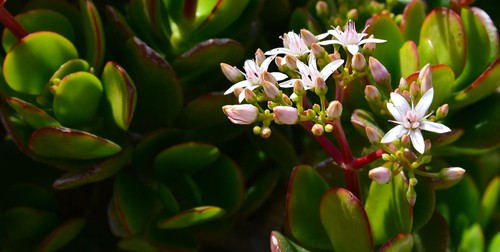Jade plants are popular houseplants known for their succulent leaves and tree-like appearance. They are easy to care for and can thrive in various lighting conditions.
However, sometimes jade plant owners may notice black spots on the leaves, which can be concerning. In this article, we will explore why jade plant have black spots on leaves and how to treat and prevent them.
Understanding jade plants is essential to identify the causes of black spots on their leaves. Jade plants are succulent plants that store water in their leaves, stems, and roots. They are native to South Africa and can grow up to 10 feet tall in their natural habitat.
Jade plants are hardy and can survive in various lighting conditions, but they prefer bright, indirect light. They also need well-draining soil and infrequent watering to avoid root rot.
Identifying black spots on jade plant leaves is the first step in addressing the issue. Black spots can appear on the leaves, stems, or roots of jade plants. They can be caused by pests, fungal or bacterial infections, or environmental factors.
Some black spots are harmless and can be easily removed, while others can be a sign of a more severe problem that requires immediate attention.
Key Takeaways
- Black spots on jade plant leaves can be caused by pests, fungal or bacterial infections, or environmental factors.
- Treating black spots on jade plant leaves involves identifying the cause and taking appropriate action, such as removing affected leaves, adjusting watering and lighting, or using pesticides or fungicides.
- To prevent black spots on jade plants, it is essential to provide them with proper care and maintenance, including well-draining soil, infrequent watering, and adequate lighting.
Check out these other popular posts:
- What is Potassium Used for in Plants?
- Why Does My Basil Plant Keep Dying?
- Why Does My Aloe Plant Smell Like Onions?
Understanding Jade Plants
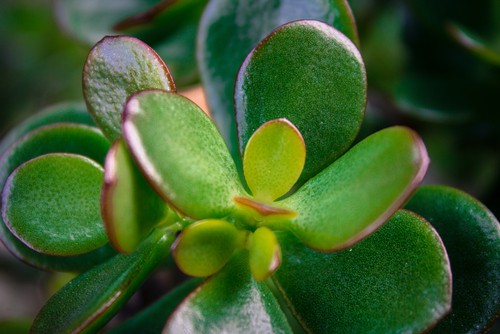
Jade plants, also known as Crassula ovata, are native to South Africa and are popular succulent houseplants worldwide. These plants are known for their fleshy, green leaves and small, pink or white flowers that bloom in the winter months. Jade plants are easy to care for and can thrive in a variety of environments.
Jade plants are succulents, which means they store water in their leaves and stems. This allows them to survive in arid environments where water is scarce. However, too much water can be detrimental to jade plants, as it can cause root rot and other issues.
Jade plants are also known for their slow growth rate and can live for many years with proper care. They prefer bright, indirect light and well-draining soil. In the winter months, jade plants go into dormancy and do not actively grow, so it is important to reduce watering during this time to maintain their health.
Identifying Black Spots on Jade Plant Leaves
Jade plants are known for their lush green leaves, but sometimes they can develop black spots that can be concerning to plant owners. Black spots on jade plant leaves can be caused by a variety of factors, including overwatering, pests, and fungal diseases.
Identifying the cause of black spots on jade plant leaves is important in order to prevent further damage to the plant.
One of the most common causes of black spots on jade plant leaves is overwatering. Jade plants are succulents that prefer to have their soil dry out between waterings.
When the soil is constantly moist, it can encourage the growth of fungi and bacteria, which can cause black spots on the leaves. In severe cases, overwatering can also cause root rot, which can lead to black spots on the leaves and other symptoms such as wilting and yellowing.
Pests can also cause black spots on jade plant leaves. Aphids and scale insects are common pests that can infest jade plants. These pests feed on the sap of the plant, which can cause the leaves to turn yellow and develop black spots. In severe cases, the leaves may become distorted or deformed.
Fungal diseases can also cause black spots on jade plant leaves. Sooty mold is a common fungal disease that can develop on jade plants. It is caused by an infestation of aphids or scale insects, which produce a sticky substance called honeydew.
The honeydew can attract sooty mold spores, which can grow on the leaves and cause black spots. Other fungal diseases that can cause black spots on jade plant leaves include leaf spot and root rot.
When identifying black spots on jade plant leaves, it is important to also look for other signs of damage. Damaged leaves may be yellow or wilted, and may have brown or black edges.
If the plant is infested with pests, you may also see small insects crawling on the leaves or stems. If the plant is suffering from a fungal disease, you may see white or gray powdery growth on the leaves or stems.
Common Causes of Black Spots

Jade plants are popular houseplants due to their low maintenance and ability to adapt to different environments. However, they are not immune to problems, and one of the most common issues that jade plant owners face is black spots on the leaves.
There are several reasons why your jade plant may develop black spots. The most common causes are related to watering and soil conditions. Jade plants are succulents and have low moisture needs. Overwatering, underwatering, and poor drainage can all lead to black spots on the leaves.
If the soil is not well-draining, it can retain too much moisture, which can cause the roots to rot. This can lead to black spots on the leaves and eventually cause the plant to die. It is important to use a well-draining soil mixture that contains grit to ensure proper drainage.
Humidity is another factor that can contribute to black spots on jade plant leaves. Excessive humidity can cause fungal diseases, which can lead to black spots on the leaves. It is important to provide good air circulation around the plant to prevent the buildup of moisture.
Improper watering is another common cause of black spots on jade plant leaves. It is important to water your jade plant correctly. Allow the soil to dry out completely between watering to prevent overwatering. Underwatering can also cause black spots on the leaves, so it is important to water your plant when the soil is dry.
Pests and Diseases
Jade plants are susceptible to various pests and diseases that can cause black spots on their leaves. These issues can be caused by improper care, environmental conditions, or infestations.
Pests
Some of the most common pests that can infest jade plants include aphids, mealybugs, scale insects, and spider mites. These insects feed on the plant’s sap, causing damage to the leaves and stems.
To get rid of these pests, one can use insecticidal soaps, neem oil, or hand removal. Prevention is the best way to keep pests away. Keeping the jade plant healthy and happy can help prevent infestations in the first place.
Diseases
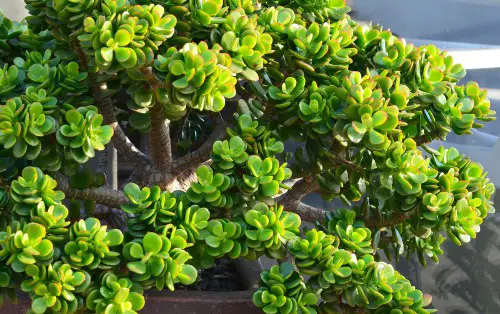
Jade plants can also be affected by various diseases that can cause black spots on their leaves. These diseases can be caused by fungi, viruses, or bacteria.
One of the most common fungal diseases that affect jade plants is black spot. This disease is characterized by black spots on the leaves, which can spread and cause the leaves to drop. To prevent this disease, one should avoid overwatering and ensure proper drainage.
Another disease that can cause black spots on jade plant leaves is bacterial leaf spot. This disease is caused by bacteria and can be spread through contaminated soil or water. To prevent this disease, one should avoid overwatering, ensure proper drainage, and keep the plant’s leaves dry.
Fungal and Bacterial Infections
Jade plants are susceptible to fungal and bacterial infections, which can cause black spots on the leaves. Fungal diseases such as anthracnose, caused by the fungus Colletotrichum gloeosporioides, can cause black spots on the leaves.
This fungus thrives in warm and humid conditions and can spread rapidly, causing leaf drop and defoliation.
Another fungal disease that can cause black spots on jade plant leaves is sooty mold. This disease is caused by the growth of a black fungal growth on the honeydew excreted by insects such as aphids and scale insects. The black fungal growth can cover the leaves, making them look black and sooty.
Bacterial infections can also cause black spots on the leaves of jade plants. One common bacterial disease is bacterial leaf spot, caused by the bacteria Xanthomonas campestris. This disease can cause black spots on the leaves, which can spread rapidly and cause defoliation.
To prevent fungal and bacterial infections, it is important to maintain good plant hygiene. This includes removing dead and diseased leaves, avoiding overwatering, and providing good air circulation around the plant. If the plant is infected, it may be necessary to use a fungicide or bactericide to control the disease.
In addition to fungal and bacterial infections, jade plants can also develop black spots due to root rot caused by fungi. Overwatering and poor drainage can cause the roots to rot, leading to black spots on the leaves and stem.
To prevent root rot, it is important to water the plant only when the soil is dry to the touch and to provide good drainage.
Treatment and Prevention
If your jade plant has black spots, there are several steps you can take to treat and prevent the issue from recurring.
Prevention

Preventing black spots is essential to maintain the health and appearance of your jade plant. This can be achieved by adopting appropriate watering techniques, ensuring proper sunlight exposure, and using clean gardening tools. By following these guidelines, you can keep black spots at bay and your jade plant thriving.
- Watering: Overwatering can cause root rot, which can lead to black spots on the leaves. Make sure the soil is dry before watering and do not let the plant sit in standing water.
- Sunlight: Jade plants require bright, indirect sunlight. Make sure your plant is getting enough light without being exposed to direct sunlight, which can scorch the leaves.
- Gardening tools: Use clean gardening tools to avoid spreading disease from one plant to another.
Treatment
If your jade plant already has black spots, you can take the following steps to treat the issue:
- Proper diagnosis: Before treating the black spots, it is important to identify the underlying cause. Black spots can be caused by a variety of issues, including overwatering, pests, or fungal infections.
- Correction: Once the underlying issue has been identified, take steps to correct it. For example, if the plant is overwatered, reduce watering frequency and make sure the soil is well-draining.
- Repotting: If the issue is caused by root rot, repotting the plant in fresh, well-draining soil can help.
- Neem oil: Neem oil can be used to treat pests, such as spider mites or mealybugs, which can cause black spots.
- Rubbing alcohol: Rubbing alcohol can be used to remove sooty mold, which can cause black spots.
- Fungicides or insecticidal soaps: If the issue is caused by a fungal infection or pests, fungicides or insecticidal soaps can be used to treat the issue.
By taking these steps, you can treat and prevent black spots on your jade plant. However, if the issue persists, it may be necessary to seek the advice of a professional.
Care and Maintenance of Jade Plants
Jade plants are easy to care for and maintain, making them a popular choice for succulent houseplants. Here are some tips to help ensure healthy growth and prevent black spots on jade plant leaves:
1. Watering and Drainage
Overwatering is a common cause of black spots on jade plant leaves. Jade plants are drought-tolerant and prefer well-draining soil. Water only when the top inch of soil is dry and avoid getting water on the leaves and stem.
Good drainage is crucial, so make sure the pot has drainage holes and use a well-draining soil mix that contains grit, such as perlite or coarse sand.
2. Soil Type
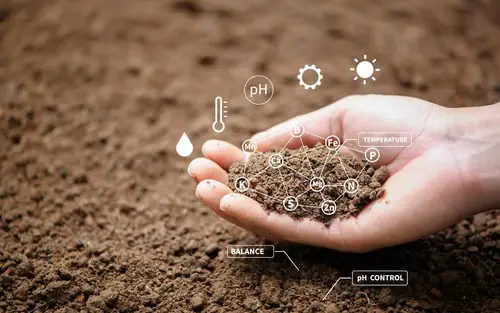
Jade plants prefer a slightly acidic soil with a pH level between 6.0 and 6.5. Use a succulent soil mix that contains perlite, peat moss, and coarse sand. Avoid using a soil mix that retains too much moisture, such as a mix with a high percentage of organic matter.
3. Fertilizing
Jade plants do not require frequent fertilization. Fertilize once a month during the growing season (spring and summer) with a balanced fertilizer diluted to half strength. Do not fertilize during the dormant season (fall and winter).
4. Pruning and Propagation
Jade plants can be pruned to maintain their shape and size. Prune in the spring before new growth appears. Use sharp, clean scissors or pruning shears to avoid injuring the plant. Propagate jade plants by stem or leaf cuttings. Allow the cuttings to dry for a day or two before planting in well-draining soil.
5. Sunburn and Injury
Jade plants prefer a sunny spot but can get sunburned if exposed to direct sunlight for too long. If the leaves turn black and shrivel, move the plant to a shadier spot. Jade plants can also get injured if bumped or dropped, causing black spots on the leaves. Handle with care.
6. Ventilation
Good ventilation is important for jade plant health. Avoid placing the plant in a drafty spot, but make sure there is enough air circulation to prevent fungal growth and edema (swollen leaves).
By following these care and maintenance tips, you can help ensure healthy growth and prevent black spots on jade plant leaves.
Additional Information
Jade plants are hardy and easy-to-care-for houseplants, but they can develop black spots on their leaves. In addition to the reasons mentioned in the previous section, there are a few other factors that can contribute to the development of black spots on jade plants.
1. Honeydew
Honeydew is a sticky substance that is secreted by some insects, such as scale, aphids, and mealybugs. When they feed on the sap of jade plants, they excrete honeydew, which can attract mold and fungi.
If left untreated, the mold and fungi can cause black spots on the leaves of the jade plant. To prevent honeydew buildup, it is important to regularly inspect jade plants for signs of insect infestations and treat them as soon as possible.
2. UV Filters
Jade plants are native to South Africa and Mozambique, where they grow in bright, indirect sunlight. When jade plants are exposed to too much direct sunlight, they can develop brown spots on their leaves. To prevent sun damage, it is recommended to use UV filters on windows or move the plant to a shadier location.
3. Gardening Tools
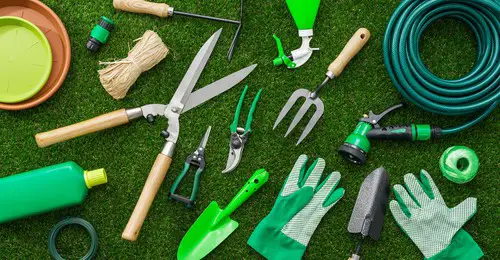
Jade plants can be susceptible to fungal diseases, which can be spread through contaminated gardening tools. To prevent the spread of disease, it is important to regularly clean and disinfect gardening tools before using them on jade plants.
4. Dormancy
Jade plants go into dormancy during the winter months when light levels are low. During this time, they do not actively grow and require less water. Overwatering jade plants during dormancy can lead to root rot, which can cause black spots on the leaves. It is important to reduce watering during dormancy to maintain jade plant health.
5. Tropical Plant
Jade plants are tropical plants that thrive in warm, humid environments. If jade plants are kept in a dry environment, they can develop brown spots on their leaves. To prevent this, it is recommended to mist jade plants regularly or use a humidifier to maintain a humid environment.
Frequently Asked Questions
How do you treat black fungus on a jade plant?
Black fungus on a jade plant is often caused by a pest infestation, such as scale insects or aphids. The first step to treating black fungus is to remove the pests using an insecticidal soap or neem oil.
Once the pests are gone, you can treat the fungus with a fungicide spray. Be sure to follow the instructions on the label carefully and apply the spray to both the top and bottom of the leaves.
How do you treat black spots on plants?
The treatment for black spots on plants depends on the underlying cause. If the black spots are caused by a fungal disease, you can treat them with a fungicide spray.
If the spots are caused by a bacterial infection, you may need to remove the affected leaves and spray the plant with a copper-based fungicide. If the spots are caused by overwatering, you should adjust your watering schedule and allow the soil to dry out more between waterings.
What does an overwatered jade plant look like?
An overwatered jade plant may have black spots on the leaves, which can be a sign of root rot. The leaves may also be soft and mushy, and the plant may start to wilt or droop.
If you suspect your jade plant is overwatered, you should allow the soil to dry out completely before watering again.
What causes jade plant leaves to turn black?
Jade plant leaves can turn black for a variety of reasons, including overwatering, pest infestations, fungal diseases, and sunburn. It’s important to identify the underlying cause of the black spots so you can address it properly.
Can a jade plant with black spots be saved?
Yes, a jade plant with black spots can be saved if you identify and treat the underlying cause of the problem. If the spots are caused by a pest infestation, you should remove the pests and treat the plant with a fungicide spray.
If the spots are caused by overwatering, you should adjust your watering schedule and allow the soil to dry out more between waterings.
Are black spots on a jade plant serious?
Black spots on a jade plant can be a sign of a serious problem, such as a pest infestation or fungal disease. If left untreated, these problems can cause significant damage to the plant.
It’s important to identify and treat the underlying cause of the black spots as soon as possible to prevent further damage to the plant.

Hey, I’m Lisa and I’ve been an avid gardener for over 30 years. I love writing, talking and living in the garden! Feel free to connect with me on my socials below

